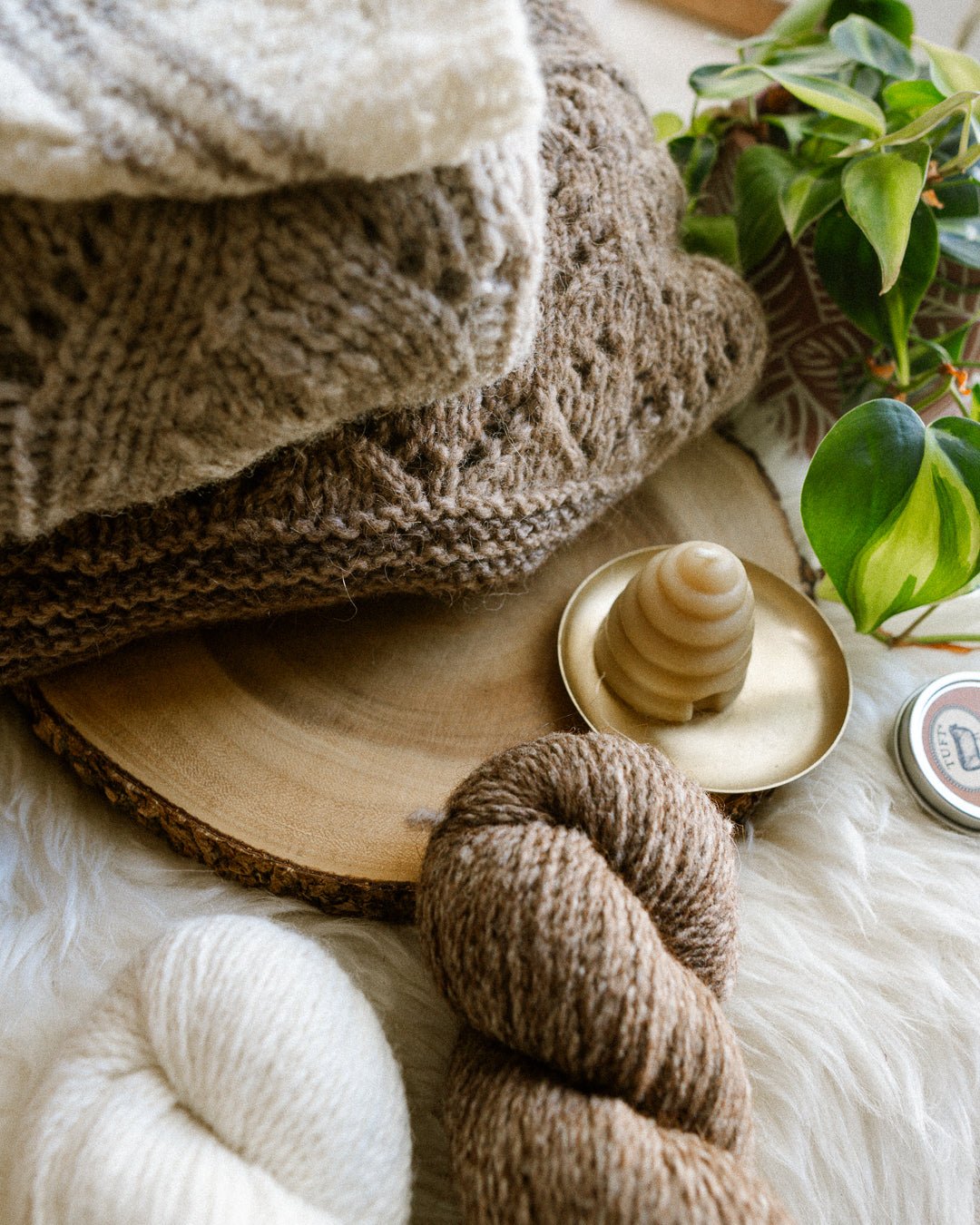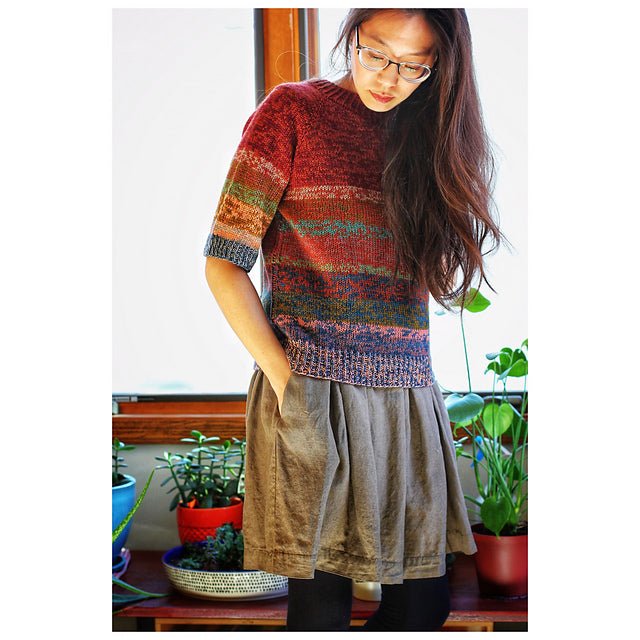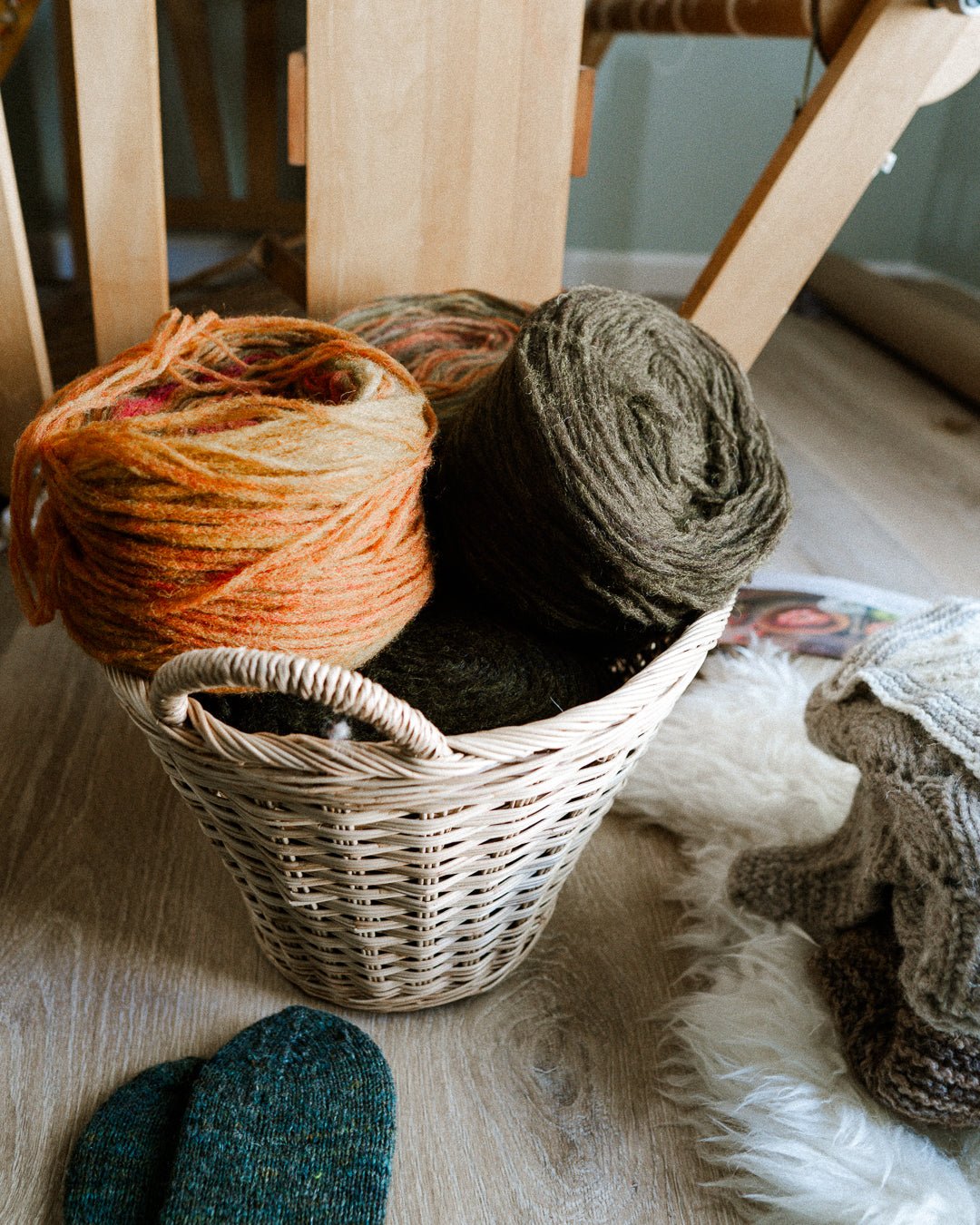
How to knit for cold weather
While we all love a good thick, oversized, and cozy pullover for winter, there are some things we can do to really amp up the warmth in our outfits with our hand knits. But in reality, fiber construction really matters when knitting for cold weather. Let's go over a few of the tips for how to knit for cold weather.
Air is what keeps us warm in cold weather!
What actually makes your hand knits warm is actually not how much fiber weight there is, but rather, how much air is incorporated into the fabric.
Air held between the fibers in your fabric is going to be your insulating best friend, while moving air is gonna hurt you due to windchill. Let's jump into some tips for how to optimize for air.
Yarn construction matters. A lot.

Unspun yarn, due to the fact that there's no twist and it's all just fluffy, wild fiber, will hold the most air between the fibers.
Generally, next, is woolen spun yarn, which is loftier as the fibers have not been combed to lay in the same direction, compared to worsted yarn.
Look for yarns that have a lower grist, which is just a fancy word for how much fiber volume there is per yard of yarn. If you're comparing two worsted weight yarns, for example, you'll find that a woolen spun yarn like De Rerum Natura Gilliatt or Hinterland Range have a much lower amount of fiber by volume per yard, but it occupies the same amount of space as worsted weight yarns we love like Knitting For Olive Heavy Merino, or La Bien Aimée Corrie Worsted.
Unspun and woolen spun yarns, due to their chaotic internal structure, have more air space between the fibers and will thus be more insulating compared to worsted weight yarns for when it gets really cold.
Try patterns like the Matthew Pullover, the Nicole Shawl, or the Building Blocks Drop, all designed for unspun or woolen spun yarns.
For our favorite unspun yarn, try Wooldreamer's Manchelopi.
Light layers for winter coats

When it gets really, truly cold, and I mean below freezing temperature, windchill and dampness means that airy knits won't be enough to keep me warm. I'll need some kind of temperature-rated outerwear, such as a down puffer coat.
I find it a real challenge to layer thick airy knits underneath, such as the ones mentioned above. So on the occasion this happens, I actually default back towards long sleeve versions of my favorite warm weather knits, or a vest. I'll wear these over my base layers. This way, bulky sleeves and underarms aren't a factor.
Light layers means that there's plenty of air being held between the layers, which is another way of adding insulation for warmth. This, combined with a densely woven woolen coat or a puffer coat that's made of a synthetic shell, keeping out windchill, creates a practical combination for truly frigid weather, while still allowing me to wear my hand knit items.
Try patterns like K's Back to School Vest (for kids), Campus Vest (for adults), Slightly Sassy V, or the Coloring Book Tee for lightweight layers with a trim underarm for layering.
Don't forget about windchill!


There's absolutely nothing worse than being wrapped to the gills from neck to ankle and then my hands and my ankles catch a bit of chill because I'm not adequately prepared, or worse, I'm wearing accessories that don't adequately block the windchill.
When my hands and feet/ankles get cold, all of me gets cold and everything we just talked about is moot.
To adequately prevent moving air from slipping in between stitches, your accessories will need to either be made from non-superwash, so that the fibers stick together better.
Or, they'll have to be really densely knitted, if you're using superwash yarn. Due to its superior ability to not get felted, superwash yarn will absolutely be gappy if knit at an insufficiently dense gauge!
Make sure that you knit long enough socks to cover your ankles, and if you are going about your day with lots of things going on, consider convertible mittens for the best of both worlds--warmth AND use of your hands.
Try our mitten knitting patterns for a variety of constructions, like convertible, full, or fingerless. Try our Queen Anne Socks for a nonsuperwash sock.
Though, you can always knit any of our sock patterns in nonsuperwash fingering weight yarn!
In conclusion...
Since I've moved to St. Louis and picked up spinning more and more, these are the things that are always on my mind when I'm designing.
You won't go wrong if you always think about how to incorporate more air for insulation when planning your outfits as well as your knits!
I hope that these tips serve you well, and keep you warm. If you'd like to read more about how to work with unspun yarns, read our unspun and woolen spun yarns tips blog.




Leave a comment
This site is protected by hCaptcha and the hCaptcha Privacy Policy and Terms of Service apply.